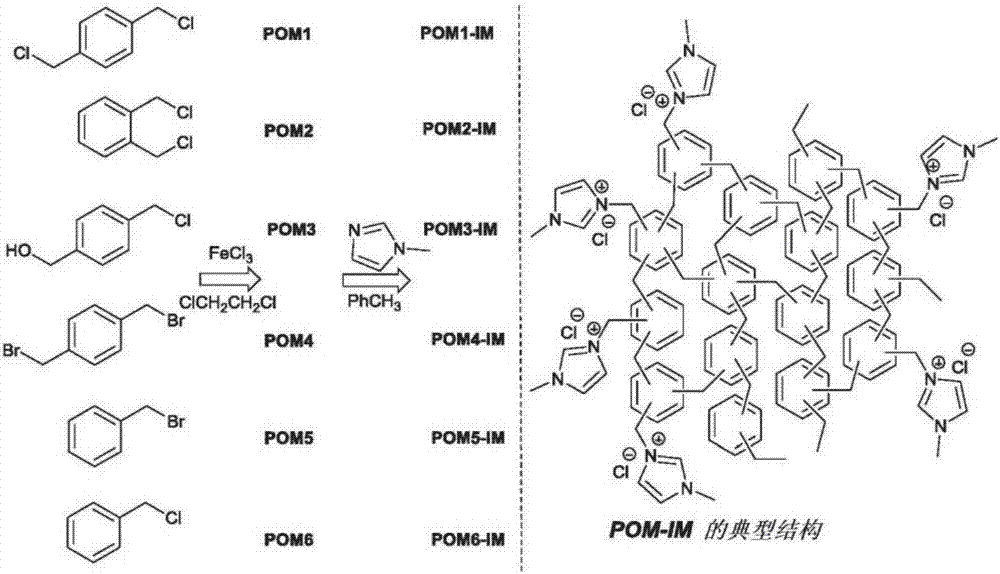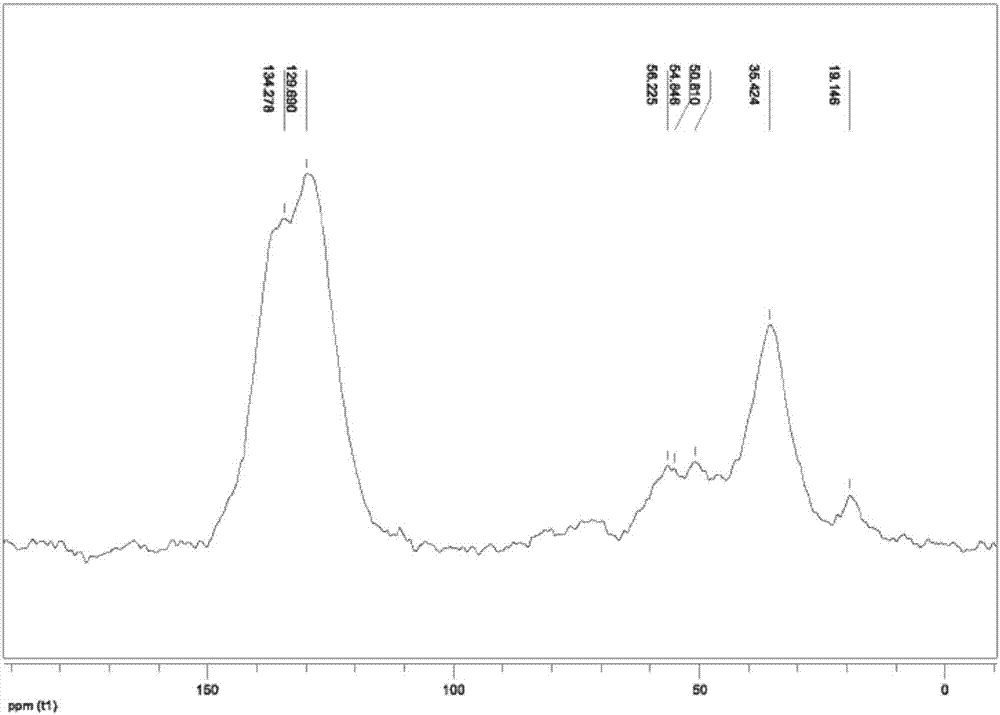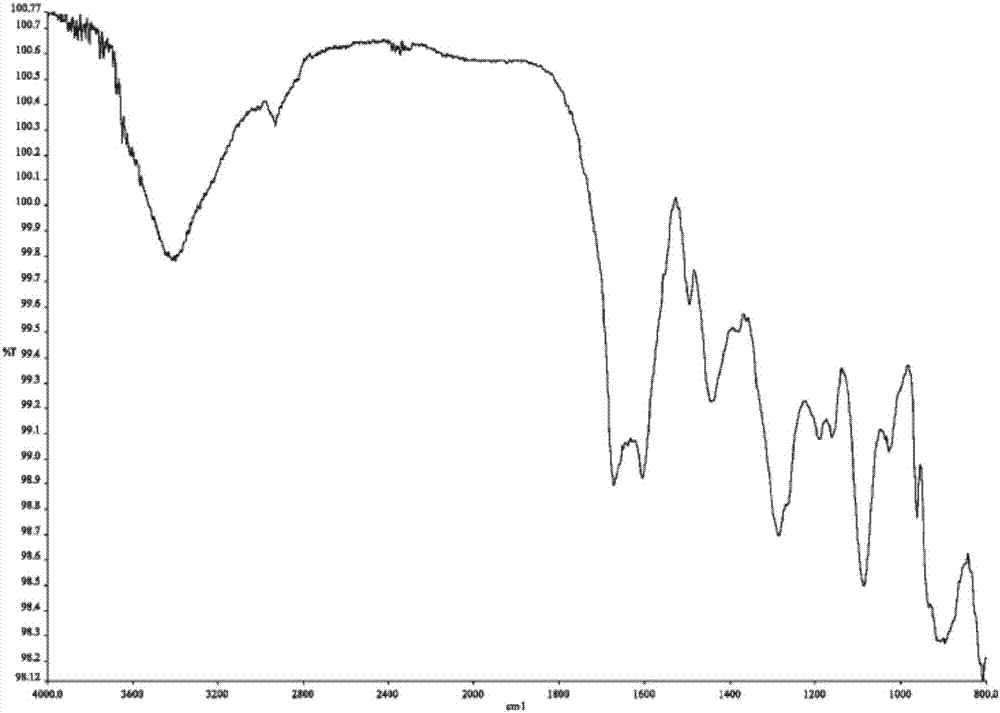Modified porous hypercrosslinked polymers for co2 capture and conversion
A porous polymer, hypercrosslinking technology, used in organic compound/hydride/coordination complex catalysts, chemical/physical processes, organic chemistry, etc., can solve problems such as limitations and achieve high activity
- Summary
- Abstract
- Description
- Claims
- Application Information
AI Technical Summary
Problems solved by technology
Method used
Image
Examples
Embodiment Construction
[0035] Exemplary non-limiting embodiments of the method according to the invention and the material obtained by this method will now be disclosed.
[0036] The present invention relates to a process for the preparation of hypercrosslinked porous polymer materials comprising the steps of: a) self-polymerization of benzyl halides by Friedel-Crafts reactions, and b) amines or heterocycles having at least one nitrogen ring atom Coupling of Compounds to the Polymers Obtained.
[0037] Step (a) is a Friedel-Crafts reaction. The benzyl halide monomer units self-polymerize in this reaction. The benzyl halides can be of a single type or a mixture of different benzyl halides. Benzyl halides are characterized as having a benzyl moiety and a halo group in the alkyl portion of the benzyl.
[0038] The benzyl halides disclosed according to the present invention are broadly defined. They include unsubstituted and optionally substituted benzyl halides. Substituted benzyl halides are benz...
PUM
| Property | Measurement | Unit |
|---|---|---|
| pore size | aaaaa | aaaaa |
Abstract
Description
Claims
Application Information
 Login to View More
Login to View More - Generate Ideas
- Intellectual Property
- Life Sciences
- Materials
- Tech Scout
- Unparalleled Data Quality
- Higher Quality Content
- 60% Fewer Hallucinations
Browse by: Latest US Patents, China's latest patents, Technical Efficacy Thesaurus, Application Domain, Technology Topic, Popular Technical Reports.
© 2025 PatSnap. All rights reserved.Legal|Privacy policy|Modern Slavery Act Transparency Statement|Sitemap|About US| Contact US: help@patsnap.com



